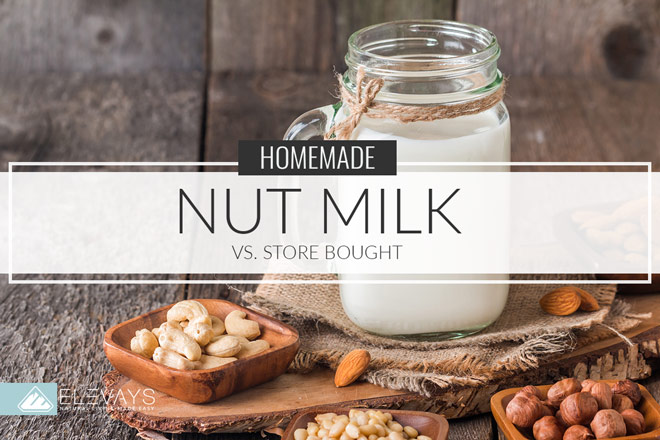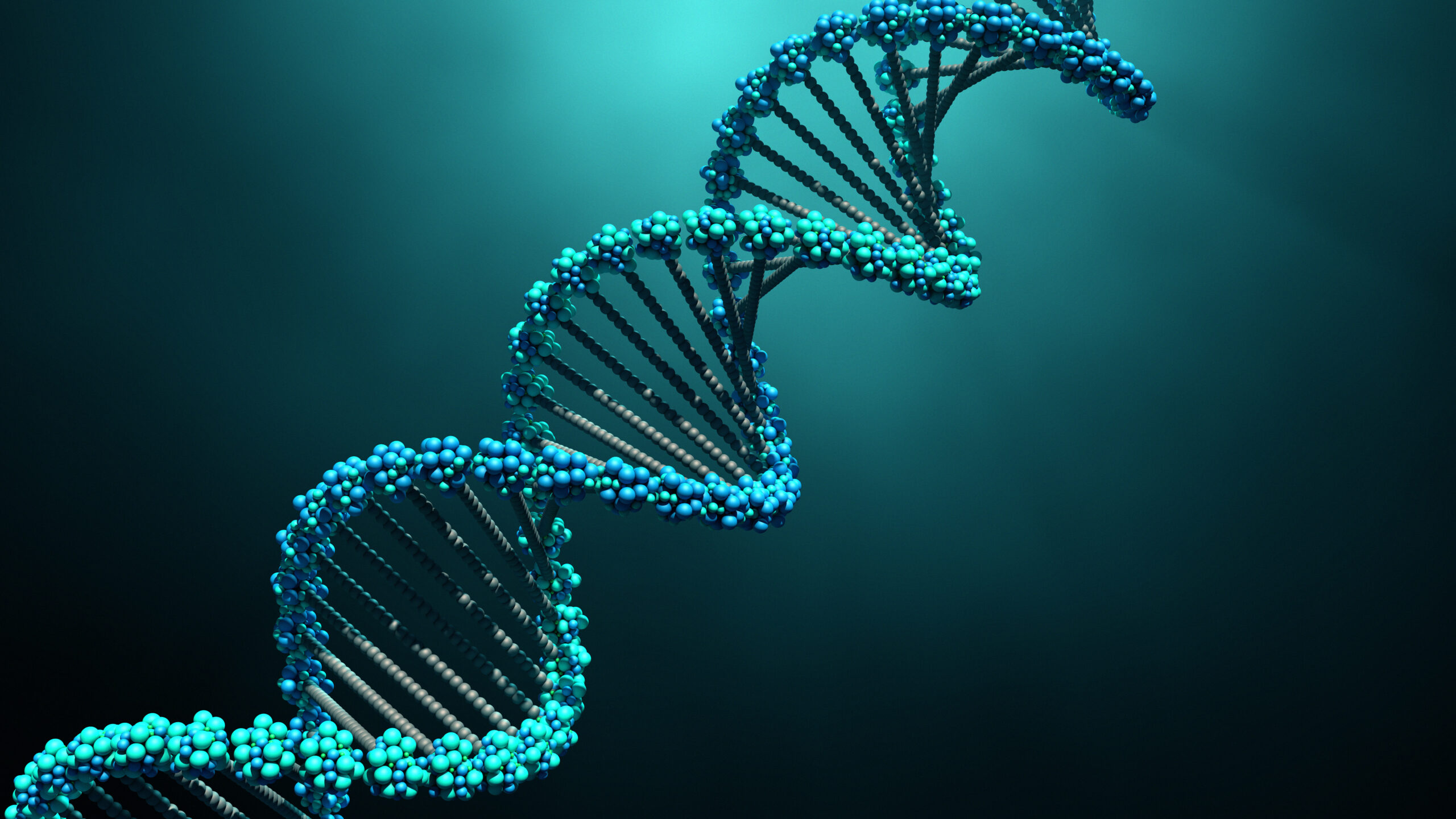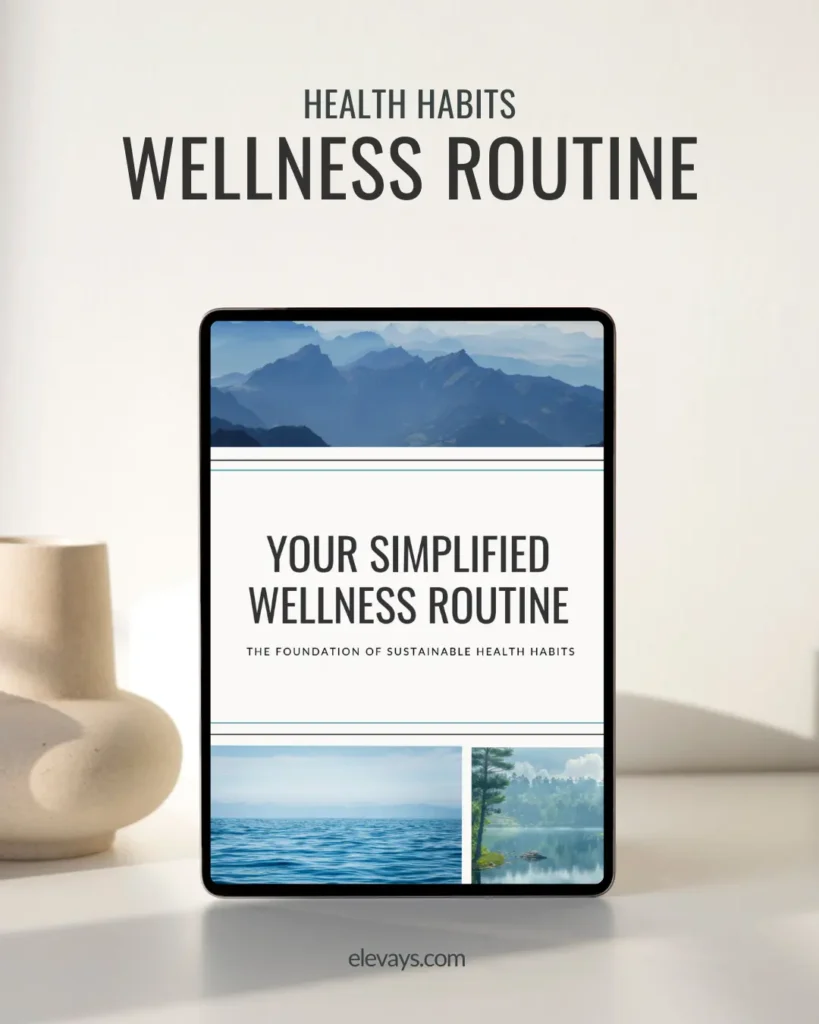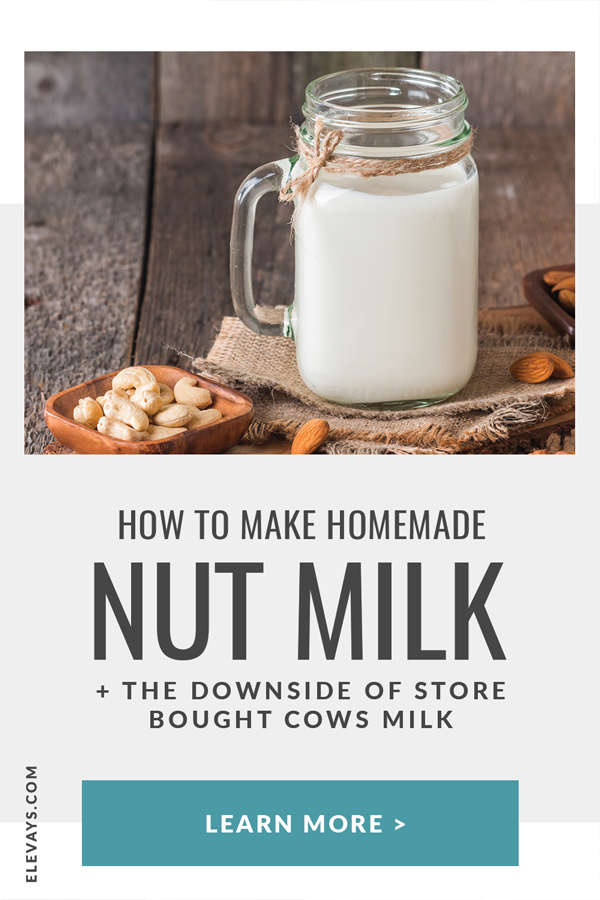Non-dairy milk is definitely trending right now. And anytime something is becoming popular there are going to be companies out there capitalizing on it. There’s nothing wrong with that, as long as the product they’re selling is high quality. But it does mean that we can’t just take things at face value and instead should take a closer look at what we’re consuming. That’s why I’m going to share all the in’s and out’s of the non-dairy milk craze and why you may want to consider making your own homemade nut milk.
There is a lot of conflicting information out there right now about dairy, but we can all agree that the conventional kind is just not good for you. And the truth is, you don’t need to be a vegan to make the switch to homemade nut milk. If you were at a coffee shop and had to choose between conventional coconut milk and conventional cow’s milk, coconut would be the healthier option every time.
Nut Milk vs Cow’s Milk
Let’s talk about the reality of conventional dairy farming today. Most cows are shoved into cramped, filthy pens and injected with hormones so they lactate all the time and can be milked day after day. If you’re a mom, especially one who has done any breastfeeding, I’m sure you can empathize with this cow. But I’m not here to debate the moral side of things, what I want to draw attention to is that her udders are bound to get raw, irritated or infected and because of this, farmers load up their cows with antibiotics.
TRUTH BOMB:
You’re
Already killing it!
If You Were More Consistent With Your Wellness Routine, You’d Be Unstoppable.
And where do these antibiotics and hormones end up? That’s right, in your milk and in your body. Pasteurization will kill microbes, which isn’t actually a good thing because those are the probiotics that help colonize your gut. Pasteurization will not kill the antibiotics, and too many of those will destroy your microbiome, lower immunity, and encourage the growth of antibiotic resistant superbugs. Pasteurizing also doesn’t kill the hormones, and I could go on and on about how those will interfere with your endocrine system.
So besides antibiotic contamination and being overly pasteurized, most farms, even the organic ones, feed their cows grain. And a lot of that grain is GMO and heavily sprayed with pesticides. A cow’s natural diet is grass, and when they eat grass they can then make all the good vitamins and omega-three fatty acids that make milk healthy. When they are eating grains, they don’t produce all these good things and instead the milk becomes more inflammatory.
But what about nut milk? Well the one thing you won’t have to worry about with these is antibiotics because as we know, nuts don’t get infections! They also won’t contain any hormones, like cow’s milk often does. However if they aren’t organic you’re running a risk of them being heavily sprayed with pesticides, just like the grains cows eat. This is why the best almond milk or other non-dairy milk is organic.
If cost is a concern, almond milk cost vs milk is about the same. Homemade nut milk is another story though, and is very cost effective. Homemade nut milk is also full of high quality fats, vitamins, minerals and other nutrients, without the heavy calories that cow’s milk has. But the biggest perk for me when it comes to choosing a non-dairy milk is the lack of antibiotics and hormones.
I also love to add them to my superfood smoothies because when it comes to food combining, nut milks don’t mix badly with fruit like dairy does. You can literally replace any of your favorite recipes with nut milks and I love to figure out creative ways to use nut milk in cooking. Alfredo sauces, in a roux, or pancakes – there are so many options.
What’s Really In Commercial Nut Milks
But just like conventional cow’s milk vs. raw organic grass fed dairy, there are some major differences in store bought and homemade nut milk. So let’s have a closer look at some of the more popular options out there.
Soy Milk
Okay I won’t share any names, but these are the ingredients in one of the most popular soy milks on the market. Soybeans, water, cane sugar, natural flavor, gellan gum. Let’s be real: the second ingredient is cane sugar! And if you don’t know already, “natural flavor” is just another word for mystery chemicals.
Soy is the cheapest nut milk to make because it’s not really a nut, it’s a bean. But soy is just not a great choice whether it’s store-bought or homemade. That’s because soy is estrogenic which can interfere with your hormones. Soy is one of the most genetically modified crops.
Hemp Milk
Now homemade nut milk is different, but if you’re buying hemp milk read your labels carefully. Here’s some ingredients you’re likely to find: water, brown rice syrup, disodium phosphate, xanthan gum. Again sugar is the main ingredient followed by chemical preservatives and binders. I don’t know about you, but I like to feed my family real food and if I can’t pronounce something I probably don’t want it in or around my body.
Oat Milk
Oat milk tastes great, it’s creamy and makes great coffee foam. It’s probably the cheapest non-dairy milk to make because it’s a grain. But oats are often contaminated with pesticides and it’s hard to find oats that aren’t genetically modified somehow. Again let’s check ingredients. Sunflower oil, gellan gum, locust bean gum, and sunflower lecithin, which are basically processed oils and binders.
Almond Milk
Is store bought almond milk raw vegan? Probably. But this is where labels can steer you in the wrong direction. Vegan is such a buzzword these days, and people assume that vegan is automatically more healthy, but if you’re eating processed fake meats, cheese and nut milk, you may as well be eating fast food hamburgers.
Almonds are loaded with healthy fats, vitamins and minerals. And the best almond milk you will find is homemade nut milk that you create yourself in your kitchen. And there are so many almond milk recipes you can definitely find one your whole family loves. One thing I have to share is that almonds aren’t the most sustainable choice to make homemade nut milk with, so if that is something you and your family values, do some research.
So just how processed are commercial nut milk products? Highly processed. Here are a couple of common additives found in commercial nut milk.
Guar Gum
This is a sticky substance that is processed from a legume called a guar bean. It is added to all kinds of products like ice cream, nut milks and gluten free bread and pastries because of its ability to bind things together.
While in very small amounts it can have some health benefits, it can also cause digestive issues and allergies in some people. And it should definitely be limited. In fact, it is now banned in weight loss products after some people suffered serious illness and even death from large doses (1).
Xanthan Gum
This one is a little more highly processed than guar gum and is made from fermented sugar, then dried out with alcohol and turned into a powder. When added to things like nut milks, it makes it thicker and more stable. It’s also commonly found in salad dressing, soup and ice cream.
Some people are allergic to it and in high doses its not good for gut. When added to formula some babies developed life threatening gut diseases (2). It’s been approved by the FDA as safe for adults, but anything processed like this that can cause that much damage to babies doesn’t seem like the healthiest choice.
So if you’re wondering what the differences between homemade and store-bought nut milk are, it’s simple. Store bought is processed, with extra sugar, chemicals and other binding additives. Homemade nut milk usually has three to four ingredients and can be as simple, non-toxic and healthy as you want it to be.
Reasons to Make Your Own Homemade Nut Milk
You Save Money
Is it cheaper to make your own almond milk? It definitely is. A 32 oz carton of store bought nut milk is anywhere from $4-6 and if you make it yourself your only costs are the raw nuts. If you buy in bulk you could make the same 32oz jar of homemade nut milk for $1-2 dollars or less depending on the nut you choose.
It’s Healthier
Anytime you make something from whole, unprocessed foods in your own kitchen, it’s less toxic. You’re not going to add binders, preservatives or other fillers to your homemade nut milk. And when you keep the ingredients simple, without added sugars or fake flavoring, it’s healthier.
More Nutrition
Store bought nut milk actually has very little nuts in it. In fact, some big name almond milk brands actually contain less than 2% almonds. You aren’t going to be getting any nutrition from that. When you make your own homemade nut milk, it usually calls for a ratio of 1 part nuts to 4 parts water. So homemade nut milk would contain 25% nuts, which means way more of the healthy fats, vitamins and minerals in nuts.
You Can Get Creative
When making your own homemade nut milk you can mix nuts and seeds together to find your perfect combo. Hemp and cashew are amazing together, and then you get the health benefits of both. Adding superfoods like cacao or medjool dates to your homemade nut milk also makes for a delicious and healthy treat. The beauty of DIY is that you can get as creative as you want.
The bottom line is if you want to drink cow’s milk, do it. But make sure it’s organic, grass-fed and ideally, raw. If you want to drink nut milk, do that too. But be really aware of what’s in it. And if you want it to be non-toxic with some nutritional value, then make your own homemade nut milk. It really is so easy to do, here’s my favorite recipe below.
DIY NUT MILK RECIPE
Instructions:
- Put one cup of preferred nuts in glass bowl and cover with water, leave overnight or for 48 hours in bowl
- After 1-2 days drain and rinse nuts
- Place nuts in blender with 2 cups of water
- Blend for 2 minutes
- Use this nut milk bag to strain
- If preferred, sweeten to taste with raw honey or stevia
But I’d love to hear from you. Are you a fan of nut milks? Do you have a favorite non-toxic store bought brand or do you make your own? I’m always looking for new ideas and homemade nut milk recipes so please leave a comment below and share!
Sources:
- Link, Rachael (2019). “Is Guar Gum Healthy Or Unhealthy? The Surprising Truth.” Retrieved from: https://www.healthline.com/nutrition/guar-gum#bottom-line
- Pullen, Caroline (2017). “Xanthan Gum- Is This Food Additive Healthy or Harmful?” Retrieved from: https://www.healthline.com/nutrition/xanthan-gum
- Schultz, Rachael (2019). “How Many Almonds Are Actually In Almond Milk?” Retrieved from: https://www.shape.com/healthy-eating/diet-tips/how-many-almonds-are-actually-your-almond-milk











I drink mostly almond milk, sometimes coconut-almond but I always read the ingredients. I only buy with no added sugar and no flavorings. I also steer clear of carrageenan. I just discovered oat creamer-it makes coffee taste richer than using almond creamer. It has organic cane sugar as the 3rd ingredient (3 gm/serving) and has gellum gum. I only use it once a day so I hope that is not too bad.
How do you make oat milk? I wouldn’t think that would need to soak for 48 hours. Thx!
Hey there! I don’t have any experience with homemade Oat Milk, but here is a link that may be helpful: https://minimalistbaker.com/make-oat-milk/
Enjoy!